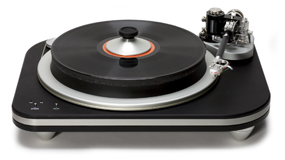Unless you earn $2 million an episode, a la Charlie Sheen, $30k is a lot of change to spend on a turntable and tonearm, especially when adding a worthy cartridge and phonostage could easily double the sum. Taking economics into consideration, TONE receives plenty of email from readers with turntables in this range or considering a similar level of purchase. We get substantially fewer communiqués from listeners contemplating a six-figure turntable—now, that’s crazy talk.
To be certain, audiophiles opting to make purchases in these price ranges are well-heeled, yet most seem to be longtime analog lovers that are seeking out that “destination table.” They’ve owned a number of turntables and amassed a fairly substantial vinyl collection. Typically, $30k doesn’t constitute an entry-level price point for many vinyl aficionados; something is often sold or traded (maybe a jet ski or motorcycle) for the down payment, so the sting isn’t quite as severe.
While it’s easy to get carried away with any number of six-figure turntables, $25-$30k represents the sweet spot, and right where the AVID Acutus Reference SP lies. The ‘table itself lists for $24,995 and the SME V tonearm (which arrived pre-mounted on our review sample) bumps the price up another $5,495. The subchassis on comes pre-drilled for an SME tonearm, but adaptors for Rega, Triplanar, and a few others can be purchased from $100 – $225, depending on the version you require. Current Acutus owners can easily upgrade to the Reference SP—which incorporates AVID’s latest-generation digital-speed control, larger power supply, and two-drive belt system—for $6,400.
Save for a sold-out 10th Anniversary Model ($40,000) limited to just ten units, the Ref SP stands for all practical purposes as AVID’s top-of-the-line turntable. In case you’re wondering, AVID stands for “A very interesting design.” And since the Acutus served as AVID’s original turntable design, the SP Reference takes advantage of everything the manufacturer has learned during the past decade. AVID designer and director Conrad Mas explains that, a few years ago, he wanted to take the company and his products to an even higher level.
“Rather than say that’s my product, take it or leave it, we listened very carefully to what our customers had to say and, bit by bit, addressed any issues they didn’t feel were best-in-class. We’ve taken this approach all the way to the packaging, with excellent results.”
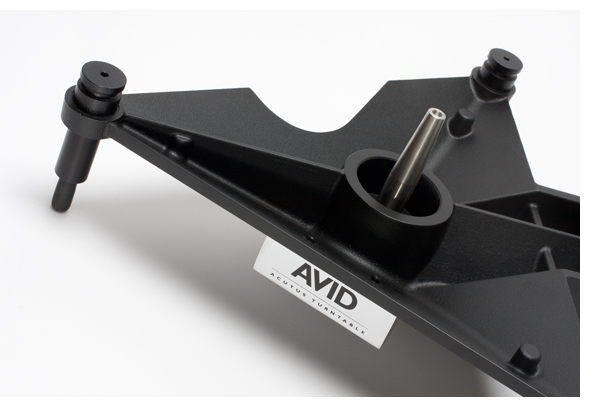 Everything is Jelly
Everything is Jelly
While the Ref SP is AVID’s premier turntable, the entire line benefits from Mas’ design philosophies. He feels that it is essential for a turntable to get rid of the vibrational energy in the environment as well as that in the vinyl record itself. As he likes to say, “Everything is jelly at a certain frequency; you just can’t see it. The goal is to move the all of the vibration away from the cartridge.”
The subchassis is cast from a variable density, highly granular aluminum, which damps the mid and low frequencies most effectively while even the coating on the subchassis is specifically designed to reduce the skin tension of the aluminum casting, effectively dissipating the HF resonance. Rather than cast from a solid shape the area between the bearing and the tonearm mount looks as if it is folded, giving the shape more rigidity than a solid piece, yet having lighter weight. Mas comments, “This is the most important part of the subchassis, where rigidity is most critical.”
The platter takes the same approach. Mas adds: “The chrome plating on the SP Ref isn’t for the bling factor, it’s functional. It does an excellent job at killing HF resonance. We’ve tried a number of different coatings, but when we did the measurements, nothing worked as well as the chrome plating. When we listened to the different finish options, the chrome sounded best by far.”
Interestingly, Mas feels that the recent trend of 180- and 200-gram LPs is counterproductive. “What we want to do is evacuate the vibration of the record as far away from the stylus as fast as possible. A 200-gram platter stores more energy that the stylus will read and adds a veil to the sound.”
Most turntables concentrate the majority of the mass in the chassis/subchassis assembly. AVID takes a different approach with its units by making the platter the most massive component. Since there’s no heavy subchassis deflecting the bearing during vibration, bearing noise is kept to a minimum. This is the main reason that the Reference SP has such a low noise floor. In addition, a polymer disc is bonded to the 10kg aluminum platter has a specially designed polymer mat bonded to it which reflects vibration created by the stylus during playback, this being channeled through the bearing that the record is mechanically grounded to. This differs from plastic platters that store vibration or felt mats that allow the records to vibrate causing mistracking.
Mas feels that a suspended ‘table represents the optimum in vinyl playback design because the springs can be tuned to a specific frequency, again effectively isolating the important stylus from outside vibration. In the vertical axis, AVID’s suspension is tuned to 2.5Hz, a factor of two lower than the average cartridge/arm compliance frequency. By comparison, a seismograph, tuned to measure the vibration of the Earth, is at .5Hz.
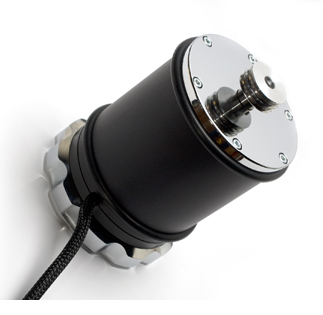 The Opposite Approach
The Opposite Approach
The main advantage of direct-drive turntables relates to the amount of on-hand torque; by comparison, to minimize the motor’s control on the platter, belt-drive ‘tables rely on wimpy motors coupled to a tiny belt. Flying in the face of convention, AVID utilizes a powerful motor to drive the platter, thus offering more control. Belt-drive owners also likely notice the fairly pokey start-up. Not so the Ref SP. It starts quickly, just like a direct-drive broadcast table!
AVID hand-builds the motors in its factory, where they are then hand-tuned to the individual power supply that will be shipped along with the turntable. In the case of the Ref SP, the power supply alone weighs 42 pounds (19kg.) and features a 1KV power transformer. As I unpacked the box, I honestly thought the company made a mistake and shipped me one of its new power amplifiers instead.
Tradition aside, the approach works flawlessly. A cursory check of the speed with the Acoustic Sounds test record and digital multimeter revealed perfect accuracy: 1000Hz on the nose.
Setup
The Ref SP requires some assembly, but thanks to the concise manual, you should be up and running within about 30 minutes, even when working at a leisurely pace. As much as you will want to spin records as quickly as possible, a more metered set-up pace will give you an even greater appreciation for the care that went into the component parts.
Once the bearing ball is inserted and the main bearing gently slid into place, you can mount the 35-pound platter on the subchassis, making mounting and aligning your cartridge a much easier task than doing so with the whole ‘table assembled—a nice touch. This streamlines the set-up process, because you aren’t fighting the turntable suspension when trying to set VTA and such. It allows closer access to the area where the stylus meets the alignment gauge and, again, a higher degree of accuracy. AVID supplies an alignment protractor to help with the overhang alignment. Mas mentions that this step is “absolutely critical.” Which is exactly why the company spent the time and trouble to create its own alignment jig for the SME tonearms. (AVID also produces these for Rega and Linn arms as well as a universal version.)
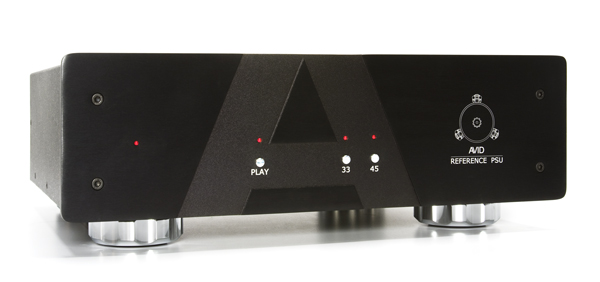 The last bit of setup involves fine-tuning the suspension and placing the chassis onto a level surface. Once the subchassis is leveled with the supplied tool, the suspension is perfectly tuned to the proper frequency. The final act involves fitting the three O-rings to the suspension towers and attaching the two drive belts, the only tough part of the entire process. First, pause in order to focus your concentration. Fortunately, my chi was in perfect order. I slipped the belts on just right on my first attempt.
The last bit of setup involves fine-tuning the suspension and placing the chassis onto a level surface. Once the subchassis is leveled with the supplied tool, the suspension is perfectly tuned to the proper frequency. The final act involves fitting the three O-rings to the suspension towers and attaching the two drive belts, the only tough part of the entire process. First, pause in order to focus your concentration. Fortunately, my chi was in perfect order. I slipped the belts on just right on my first attempt.
An $80 syringe of silicone damping fluid that usually comes with the SME V is one lone thing missing from the Ref SP box. It’s not advised. The subchassis’ unique design moves the vibration straight away from the base of the tonearm mount, effectively into the subchassis.
External damping is usually required when using a cartridge with too much compliance in an arm with too much mass, but the AVID’s low suspension frequency and clamping system eliminates the need for its use. “That’s why the SME arms get a bad reputation for wooly bass. Reflected vibration boosts bass and colors the midrange. It’s not the arm at all. And the non-linear damping in the vibration path, making up for the compliance mismatch, kills the high frequencies. Not so with our table.”
Having spent quite a bit of time with SME tables and tonearms in particular (I own four of them, from the vintage 3009 up to the V), I can assuredly state that the Ref SP is a completely different animal. If you didn’t think an SME arm could sound light and lively, guess again. Though I’ve always found SME arms slightly heavy-sounding,
their consistency and ease of setup has always made them a favorite. But with AVID’s ‘tables, there is no sonic compromise. Mas is definitely on to something.
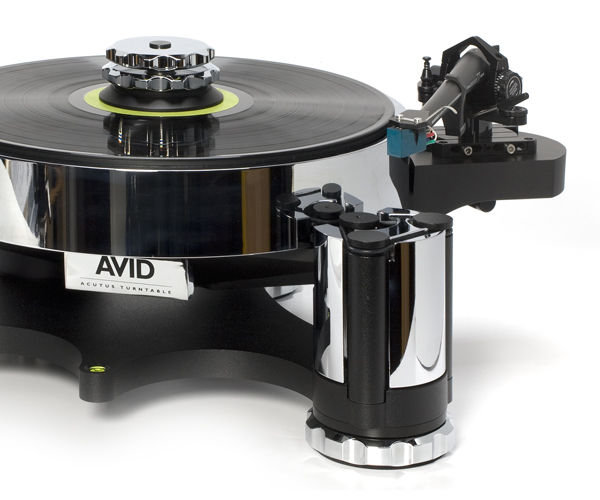 Listening and Comparisons
Listening and Comparisons
While it is always difficult to actually describe the sound of any component without putting it into context, the Ref SP reminds me of a combination of my two favorite turntables: the Rega P9 and the SME 30. If you can imagine a ‘table with the weight of an SME 30 that also has the pace, timing, and speed of the P9, that’s the closest anyone can get to telling you exactly what the SP Ref sounds like.
Almost immediately, the Ref SP became the go-to mechanism in my stable of reference turntables. After a few days of comparisons, it was obvious that I could not live without it. It also meant that a couple of other turntables had to go. Its performance with grade A+ pressings was nothing short of amazing. But even with average pressings, like Emerson, Lake and Palmer’s Trilogy—a record I’ve heard hundreds of times since the 70s—revealed new tidbits. Listening to “Abaddon’s Bolero” revealed another layer of very quiet synthesizer playing at the beginning of the track. And as Greg Lake’s bass line entered, there was more texture—and the bass actually had a firm placement in the left channel. Playing the same track with the same tonearm and cartridge combination on my Oracle Delphi V spread the bass out almost evenly between the channels, with a significant loss of pace.
Staying in the classic rock vein and moving to the Classic Records pressing of Alan Parson’s I Robot also yielded a completely new experience. The background chanting in the title track possessed a chilling realism I’d never heard before, as it simply rose up and crept in and out of the forefront.
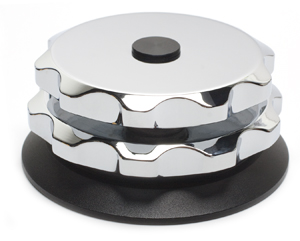 Experiencing acoustic material proved equally great. Listening to Analogue Productions’ recently remastered Bill Evans The Riverside Recordings box set approximated sonic nirvana. “Polka Dots and Moonbeams,” from Moonbeams, starts gently. The ultra-low noise floor of the Ref SP brought the music up out of what seemed like nowhere; the tonality of the piano epitomized perfection. At the beginning of Rachmaninoff’s Piano Concerto No.1 in F sharp minor, Op. 1, the horns jumped right out of the soundstage in a way that they never have done in my system. Thanks to the additional dynamic range, the overall presentation felt louder since quiet passages were now significantly quieter.
Experiencing acoustic material proved equally great. Listening to Analogue Productions’ recently remastered Bill Evans The Riverside Recordings box set approximated sonic nirvana. “Polka Dots and Moonbeams,” from Moonbeams, starts gently. The ultra-low noise floor of the Ref SP brought the music up out of what seemed like nowhere; the tonality of the piano epitomized perfection. At the beginning of Rachmaninoff’s Piano Concerto No.1 in F sharp minor, Op. 1, the horns jumped right out of the soundstage in a way that they never have done in my system. Thanks to the additional dynamic range, the overall presentation felt louder since quiet passages were now significantly quieter.
Having performed a number of listening experiments with many turntable/cartridge combinations, I’ve arrived at the firm conclusion that a top-notch turntable with a modest cartridge will deliver more sound than a big-bucks cartridge on an inexpensive turntable. Even when using the Ref SP with the inexpensive Denon DL103R, I was consistently impressed at how much further I could hear into the cartridge’s capabilities. Hence, a device I considered somewhat lackluster in budget turntables turned in a stellar performance with the Ref SP. Moreover, all of the $5,000 cartridges I had at my disposal came across as relatively ho-hum (even when aligned to perfection) when mounted to a budget turntable—again confirming Mas’ analysis of how important every aspect of a turntable design is to playback. The Ref SP does a better job of extracting the music out of vinyl grooves than anything I’ve encountered—a job that is deceptively simple yet incredibly tough.
When listening to familiar records with the same cartridge (in this case, a Lyra Skala) mounted to both the Ref SP and my current reference, the Spiral Groove SG-2, the Ref SP’s additional dynamic punch became instantly apparent on heavy rock music, large-scale symphonic music, and everything in between. The ‘table’s ability to unravel the intricacies of complex recordings is simply phenomenal. What’s more, the rock-solid pitch stability and ultra-low noise floor offer up more than pinpoint imaging, painting tonal images in true three-dimensional space. Who needs multichannel when two-channel is rendered so clearly?
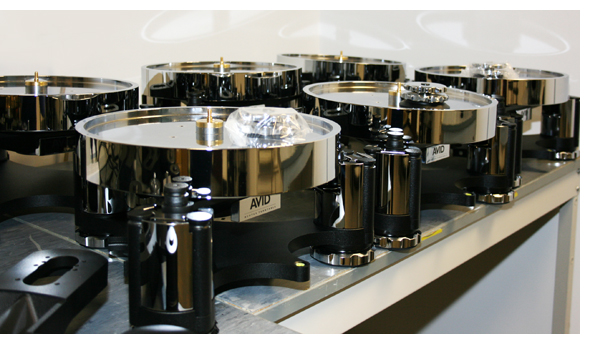 The Rabbit is in Hand
The Rabbit is in Hand
I’ve been chasing the analog rabbit for more than 30 years. I’d come awfully close to catching it in the past, but with the AVID, I finally got the rabbit by the ears. The Acutus Reference SP combines bespoke build quality, ease of setup, and stellar performance in a gorgeous package. What else could you possibly want?
Yes, this is the point in the review where the reviewer often says that they would “buy this ‘table if they could afford it and will really miss it when they send it back.” Not here baby. I love this ‘table; it offers by far the most enjoyable analog experience that I’ve ever had. Not only did I purchase the SP Ref, I bought two of them.
The Acutus Reference SP is indeed A Very Interesting Design.
AVID Acutus Reference SP Turntable (tonearm not included)
MSRP: $24,995 (US); £16,500 (International)
Manufacturer Contact:
www.avidhifi.co.uk
www.musicdirect.com (US importer – Click link to purchase from MD)
Peripherals
Preamplifier Burmester 011
Power amplifier Burmester 911 mk. 3
Phono Preamplifier Audio Research REF 2 Phono, AVID Pulsare
Phono Cartridges Koetsu Urushi Blue, SoundSmith Sussurro Paua, ClearAudio DaVinci, Grado Statement 1
Tonearm SME V
Tonearm Cable Furutech Silver Arrow
Speakers GamuT S9
Power Running Springs Audio Maxim, Dmitri
Cable Shunyata Aurora
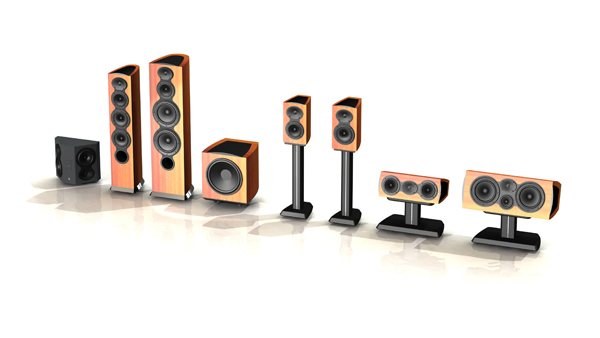 HARMAN’s Revel announced that it has finalized the models, specs and availability of its upcoming Performa3 loudspeakers. The Revel Performa3 Series is a complete range of home theater and music loudspeakers that incorporates significant engineering and aesthetic enhancements to the original Performa Series to deliver extraordinary music and movie soundtrack reproduction.
HARMAN’s Revel announced that it has finalized the models, specs and availability of its upcoming Performa3 loudspeakers. The Revel Performa3 Series is a complete range of home theater and music loudspeakers that incorporates significant engineering and aesthetic enhancements to the original Performa Series to deliver extraordinary music and movie soundtrack reproduction.


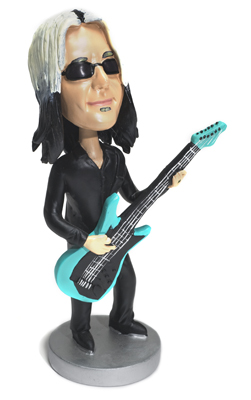 A few years ago, I had a great chat with Todd Rundgren backstage in Seattle, the day before he released the Arena album, which lead to a formal interview a few weeks later. So for all the Todd fans in the crowd, here’s a little bit of history.
A few years ago, I had a great chat with Todd Rundgren backstage in Seattle, the day before he released the Arena album, which lead to a formal interview a few weeks later. So for all the Todd fans in the crowd, here’s a little bit of history.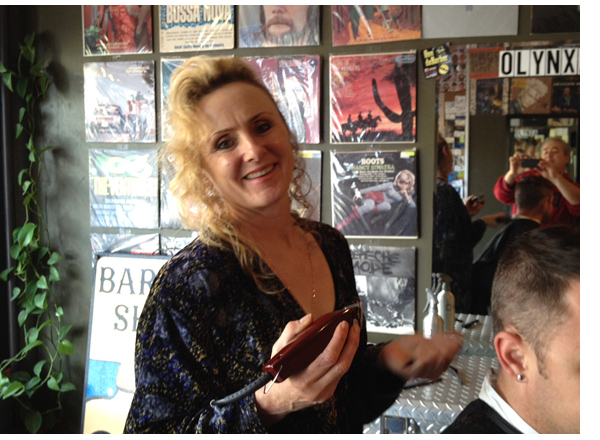
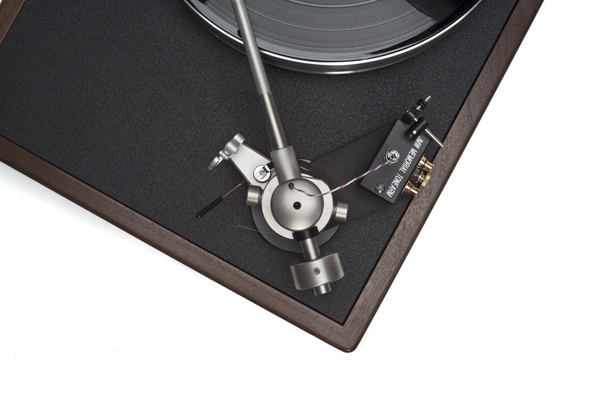 An output pod with RCA jacks and a grounding terminal lurk at the rear corner of the plinth. There’s a quick-release connector, meaning tonearm wands are easily interchanged and cartridges effortlessly swapped. And since Lyra’s Kleos and Kleos mono cartridges possess identical bodies and parameters, the switch between stereo to mono is a snap.
An output pod with RCA jacks and a grounding terminal lurk at the rear corner of the plinth. There’s a quick-release connector, meaning tonearm wands are easily interchanged and cartridges effortlessly swapped. And since Lyra’s Kleos and Kleos mono cartridges possess identical bodies and parameters, the switch between stereo to mono is a snap. Playing through the new Audio Research REF Phono 2 SE, the Classic 1 ably cruises through recent Music Matters Blue Note remasters. Comparing the playback on “Scrapple From the Apple” (From Dexter Gordon’s Our Man In Paris) between the Classic 1 fitted with the Kleos cartridge to Lyra’s flagship mounted to my reference AVID Acutus Reference SP with TriPlanar arm reveals the Classic 1’s ability to cover the basics—rhythmically and dynamically. Of course, the AVID/TP combination offers a larger dynamic swing, but the Classic 1 always captures the essence of the performance, with Dexter Gordon’s tenor sax escaping out into the room in a manner it doesn’t via lesser turntables.
Playing through the new Audio Research REF Phono 2 SE, the Classic 1 ably cruises through recent Music Matters Blue Note remasters. Comparing the playback on “Scrapple From the Apple” (From Dexter Gordon’s Our Man In Paris) between the Classic 1 fitted with the Kleos cartridge to Lyra’s flagship mounted to my reference AVID Acutus Reference SP with TriPlanar arm reveals the Classic 1’s ability to cover the basics—rhythmically and dynamically. Of course, the AVID/TP combination offers a larger dynamic swing, but the Classic 1 always captures the essence of the performance, with Dexter Gordon’s tenor sax escaping out into the room in a manner it doesn’t via lesser turntables.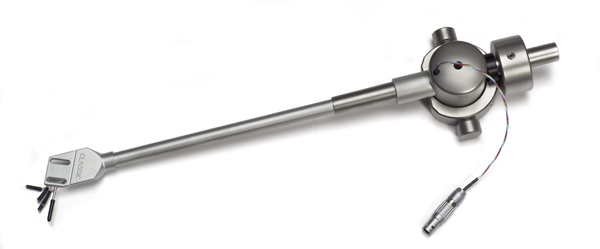 Which Model?
Which Model?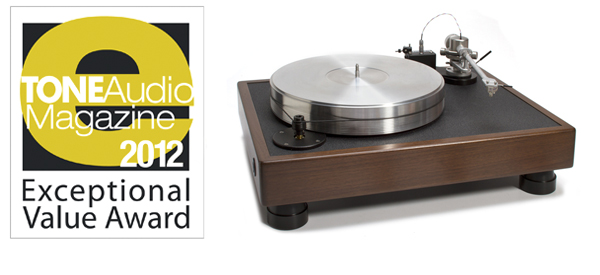 VPI Classic 1 Turntable
VPI Classic 1 Turntable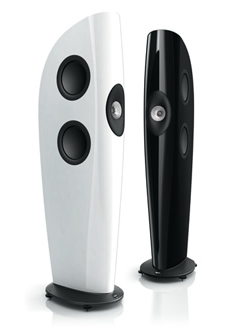
 Everything is Jelly
Everything is Jelly The Opposite Approach
The Opposite Approach The last bit of setup involves fine-tuning the suspension and placing the chassis onto a level surface. Once the subchassis is leveled with the supplied tool, the suspension is perfectly tuned to the proper frequency. The final act involves fitting the three O-rings to the suspension towers and attaching the two drive belts, the only tough part of the entire process. First, pause in order to focus your concentration. Fortunately, my chi was in perfect order. I slipped the belts on just right on my first attempt.
The last bit of setup involves fine-tuning the suspension and placing the chassis onto a level surface. Once the subchassis is leveled with the supplied tool, the suspension is perfectly tuned to the proper frequency. The final act involves fitting the three O-rings to the suspension towers and attaching the two drive belts, the only tough part of the entire process. First, pause in order to focus your concentration. Fortunately, my chi was in perfect order. I slipped the belts on just right on my first attempt. Listening and Comparisons
Listening and Comparisons Experiencing acoustic material proved equally great. Listening to Analogue Productions’ recently remastered Bill Evans The Riverside Recordings box set approximated sonic nirvana. “Polka Dots and Moonbeams,” from Moonbeams, starts gently. The ultra-low noise floor of the Ref SP brought the music up out of what seemed like nowhere; the tonality of the piano epitomized perfection. At the beginning of Rachmaninoff’s Piano Concerto No.1 in F sharp minor, Op. 1, the horns jumped right out of the soundstage in a way that they never have done in my system. Thanks to the additional dynamic range, the overall presentation felt louder since quiet passages were now significantly quieter.
Experiencing acoustic material proved equally great. Listening to Analogue Productions’ recently remastered Bill Evans The Riverside Recordings box set approximated sonic nirvana. “Polka Dots and Moonbeams,” from Moonbeams, starts gently. The ultra-low noise floor of the Ref SP brought the music up out of what seemed like nowhere; the tonality of the piano epitomized perfection. At the beginning of Rachmaninoff’s Piano Concerto No.1 in F sharp minor, Op. 1, the horns jumped right out of the soundstage in a way that they never have done in my system. Thanks to the additional dynamic range, the overall presentation felt louder since quiet passages were now significantly quieter. The Rabbit is in Hand
The Rabbit is in Hand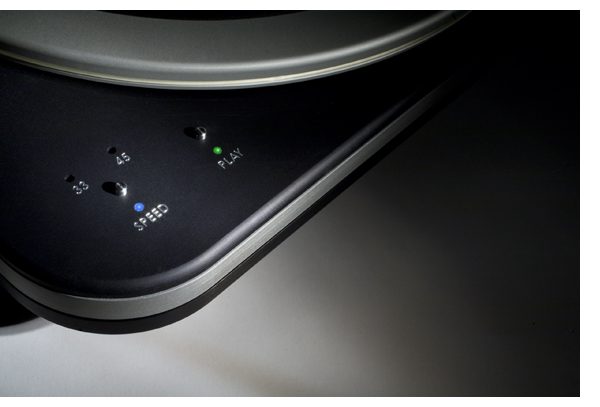 Every surface on the SG-2 is beautifully finished, and as far as tables go, I put it up on par with the SME’s in terms of build quality and understated excellence. The Continuum is a Dodge Challenger with a blower sticking out of the hood, jacked up with tires about three sizes too big sticking out of the wheel wells, while the SG-2 is an Audi S8 — elegant, understated and much more capable the minute you get into the first turn. Should you be someone who wants a turntable based on the high zoot factor, the SG-2 may not be for you. But if your primary measuring stick is musical performance, and timeless style like an Eames Chair, read on.
Every surface on the SG-2 is beautifully finished, and as far as tables go, I put it up on par with the SME’s in terms of build quality and understated excellence. The Continuum is a Dodge Challenger with a blower sticking out of the hood, jacked up with tires about three sizes too big sticking out of the wheel wells, while the SG-2 is an Audi S8 — elegant, understated and much more capable the minute you get into the first turn. Should you be someone who wants a turntable based on the high zoot factor, the SG-2 may not be for you. But if your primary measuring stick is musical performance, and timeless style like an Eames Chair, read on.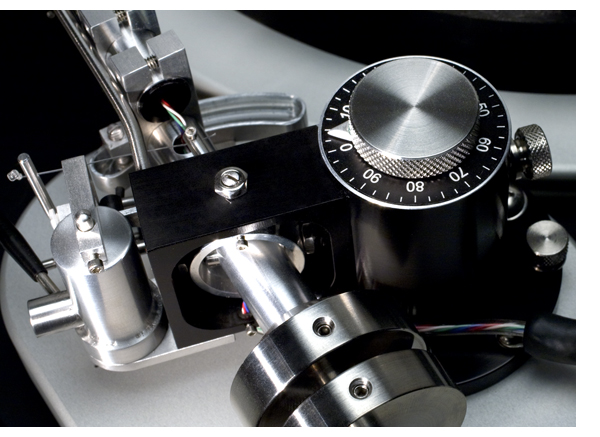 If you have some records of varying thickness, the Tri-Planar is quite handy, with its large dial indicator on the back of the arm. You can find settings for 140, 180 and 200-gram records, with a little practice, and then return to those settings when you play those records again. Or, if you are like me, you can just set the arm up for whatever you have the most of and go from there. I’m of the mind that constant fiddling is bad for the cartridge suspension, and as I seem to get long life out of my cartridges, I might be on to something. The good news is that with the Tri-Planar, you can have it your way.
If you have some records of varying thickness, the Tri-Planar is quite handy, with its large dial indicator on the back of the arm. You can find settings for 140, 180 and 200-gram records, with a little practice, and then return to those settings when you play those records again. Or, if you are like me, you can just set the arm up for whatever you have the most of and go from there. I’m of the mind that constant fiddling is bad for the cartridge suspension, and as I seem to get long life out of my cartridges, I might be on to something. The good news is that with the Tri-Planar, you can have it your way.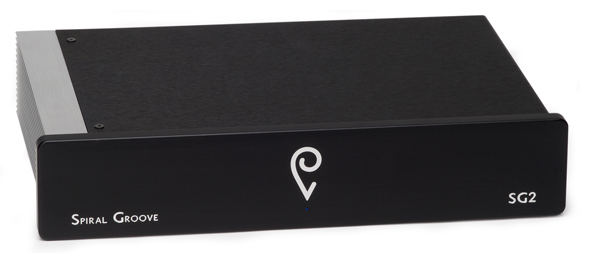 This is what analog is all about folks
This is what analog is all about folks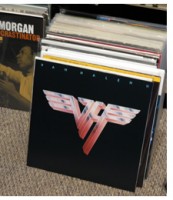 Keeping it real
Keeping it real